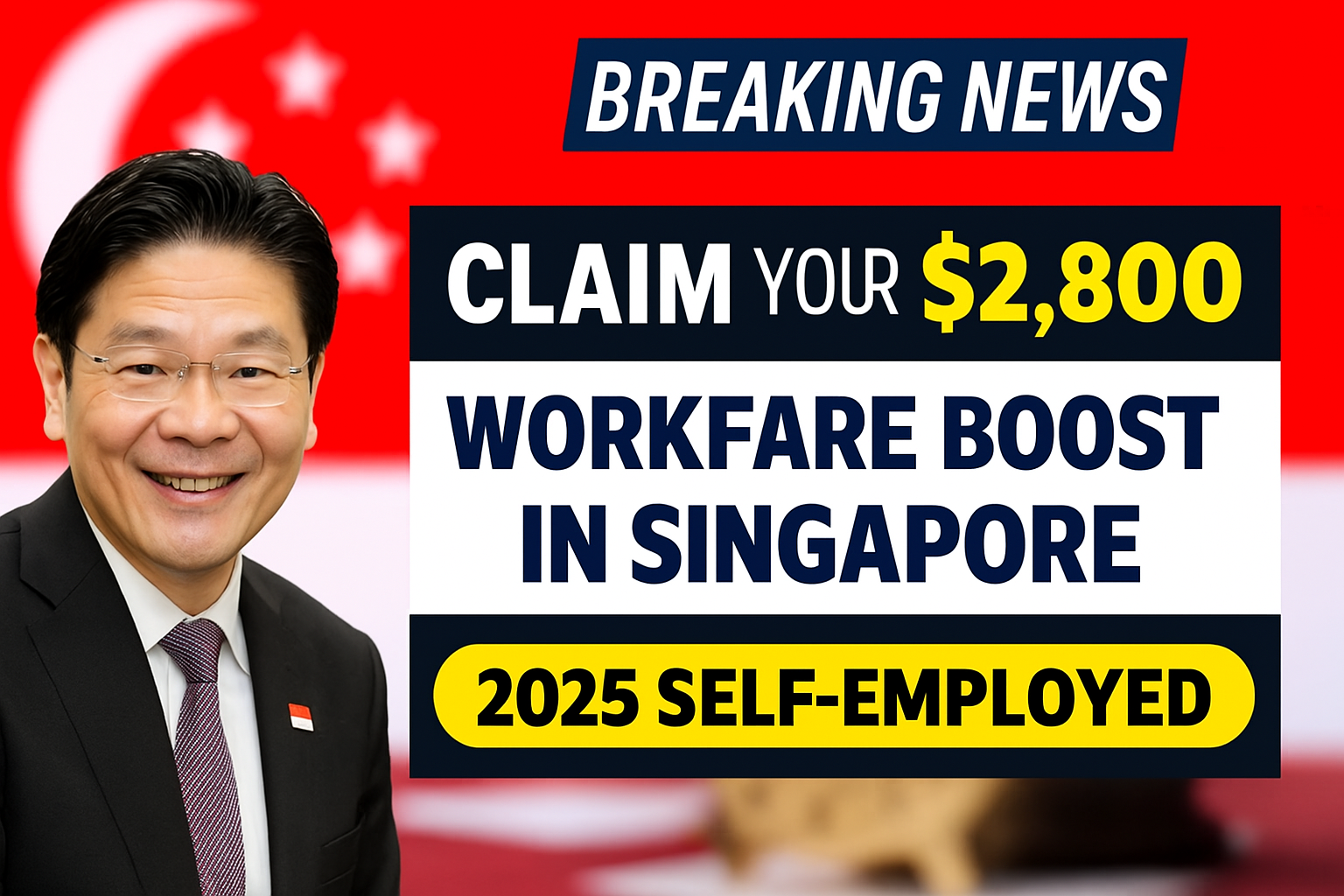In August 2025, Singapore’s self-employed professionals, including freelancers, gig workers, hawkers, and private-hire drivers, are set to receive a substantial $2,800 Workfare Income Supplement (WIS) as part of the government’s enhanced financial aid programs. This cash payout and CPF contribution initiative aims to provide financial relief, boost retirement savings, and address cost-of-living challenges amid inflation and economic uncertainty. With over $10.5 billion disbursed to more than a million Singaporeans since its inception in 2007, the WIS scheme remains a cornerstone of Singapore’s social security framework. This article explores the eligibility criteria, payout structure, application process, and actionable steps to secure this financial support for self-employed individuals.
Understanding the $2,800 Workfare Bonus
The Workfare Income Supplement (WIS) is a flagship government grant designed to support low-income workers by supplementing their earnings and enhancing retirement planning through CPF top-ups. For self-employed persons (SEPs), the 2025 enhancement offers up to $2,800 annually, combining cash payments (10%) and MediSave contributions (90%). This structure provides immediate financial assistance for daily expenses like utility bills and groceries while ensuring long-term healthcare savings and retirement security. The scheme targets freelancers, delivery riders, and other gig economy workers who often lack employer-sponsored benefits, making it a vital lifeline in today’s economic landscape.
Eligibility Criteria for the 2025 Workfare Bonus
To qualify for the $2,800 Workfare payout, self-employed individuals must meet specific requirements:
- Citizenship and Age: Must be a Singapore citizen aged 30 or older by December 31, 2025. Persons with disabilities qualify regardless of age.
- Income Threshold: Average monthly Net Trade Income (NTI) must be between $500 and $2,500, reflecting work from 2024 onward.
- Property Ownership: Must reside in a property with an Annual Value (AV) not exceeding $21,000 and own no more than one property.
- MediSave Contributions: SEPs must make mandatory MediSave contributions based on their declared NTI for the assessed year.
These criteria ensure the financial aid reaches low-income earners who need it most, balancing immediate cash support with long-term financial planning.
Payout Structure and Distribution
The $2,800 Workfare bonus is distributed annually, with payments typically credited by April 2025 for work done in 2024, provided all eligibility requirements are met. The payout is split as follows:
- Cash Payment (10%): $280 is credited to a PayNow-NRIC-linked bank account or a registered bank account via GovCash for those without digital banking.
- MediSave Contribution (90%): $2,520 is allocated to the recipient’s CPF MediSave account, supporting healthcare expenses and retirement planning.
The payout amount varies by age, with older workers receiving higher amounts to address their financial needs as they approach retirement. For example, those aged 60 and above may receive up to $4,200 annually, while younger SEPs may receive slightly less. To estimate your payout, use the WIS calculator on the CPF Board website.
How to Claim the Workfare Bonus
Unlike employees, who receive automatic payouts based on employer CPF contributions, self-employed individuals must take proactive steps to secure the $2,800 grant:
- Declare Net Trade Income (NTI): File your annual income with the Inland Revenue Authority of Singapore (IRAS) via the myTax Portal between March 1 and April 18, 2025.
- Make MediSave Contributions: Contribute to your CPF MediSave account by December 31, 2025, based on your 2024 NTI. Early contributions by March 31, 2025, ensure timely payouts by April.
- Update Banking Details: Link your PayNow-NRIC or register a bank account via CPF e-Services to receive the cash portion seamlessly.
Failure to meet deadlines may delay or forfeit the payout, so timely action is critical.
Why the Workfare Bonus Matters
The $2,800 Workfare bonus addresses both immediate and future financial challenges:
- Immediate Relief: The cash payout helps cover daily living expenses, such as groceries, utilities, and transportation costs.
- Long-Term Security: MediSave contributions enhance healthcare coverage and retirement savings, critical for SEPs without employer-backed benefits.
- Economic Resilience: By supporting low-income workers, the scheme stimulates local economies and promotes financial inclusion.
This initiative underscores Singapore’s commitment to social welfare and economic equity, ensuring self-employed professionals remain competitive in a dynamic gig economy.
Maximizing the Benefits
To fully leverage the Workfare bonus, consider these personal finance tips:
- File Early: Submit your NTI and MediSave contributions by March 31, 2025, to avoid delays.
- Plan Wisely: Use the $280 cash for essential expenses or debt repayment, and let the MediSave top-up grow for healthcare needs.
- Explore Additional Support: Check eligibility for other government schemes, such as the Assurance Package or CDC Vouchers, to complement the WIS payout.
- Upskill for Growth: Combine WIS with the Workfare Skills Support (WSS) scheme to access training allowances of up to $1,080 annually, boosting employability and income potential.
Stay Informed and Act Now
The $2,800 Workfare bonus is a powerful tool for self-employed Singaporeans to navigate cost-of-living pressures and secure their financial future. Monitor your eligibility and payout status via the CPF Board website or SingPass app. Ensure your IRAS tax filings and MediSave contributions are completed on time to unlock this financial support without delays.
This government grant not only provides immediate cash relief but also strengthens retirement planning and healthcare security, empowering freelancers, gig workers, and other self-employed professionals to thrive in 2025. Stay proactive, update your banking details, and make the most of this economic support to achieve financial stability in an evolving economic landscape.

